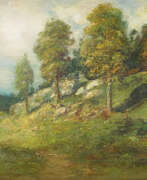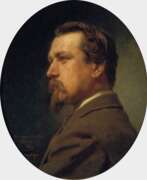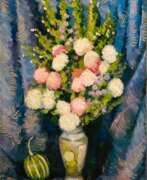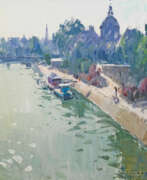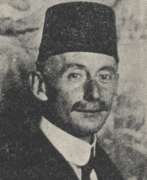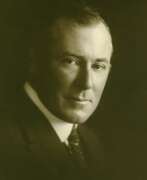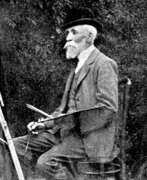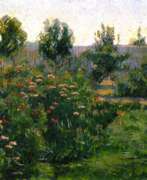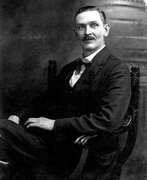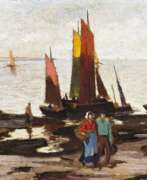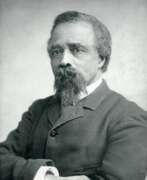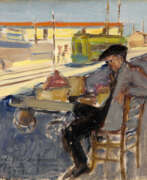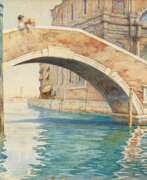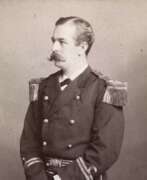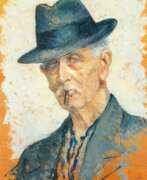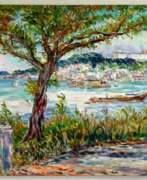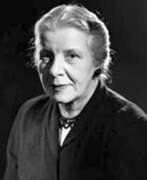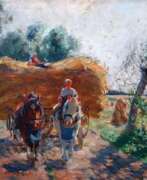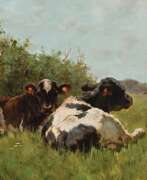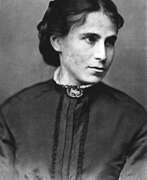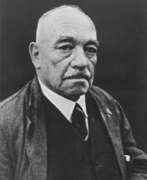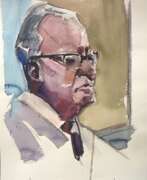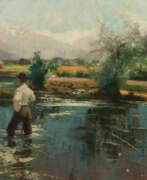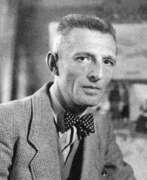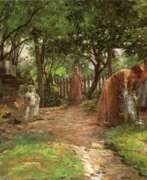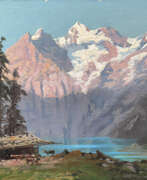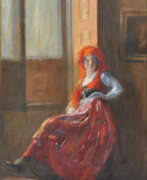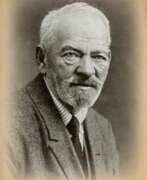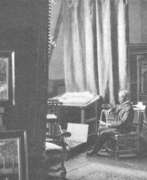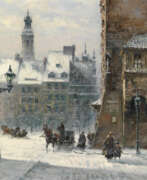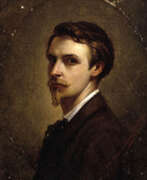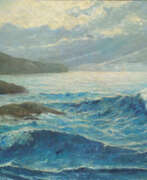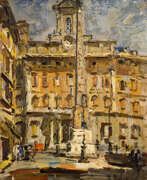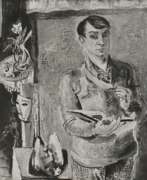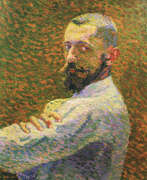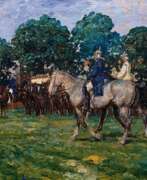Landscape painters Impressionism
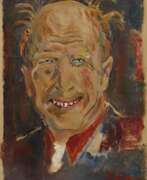

Lucien Adrion was a French post-impressionist painter, draughtsman and printmaker. He is known for his depictions of the French countryside and beaches, as well as of Parisian life, including landscapes, still lifes, figures and landmarks.
Throughout his career, Adrion exhibited his work at the Salons in Paris, where he was praised for his ability to capture the movement and transience of city life.
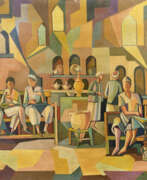

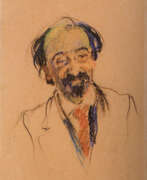

Manuel Khristoforovich Alajalov (Russian: Мануил Христофорович Аладжалов) was a prominent Russian and Soviet landscape painter and educator, born in 1862 in Nakhichevan-on-Don. Alajalov's work is distinguished by his exquisite landscapes that capture the essence of the Russian countryside. His paintings are noted for their masterful use of light and shadow, bringing a serene and lifelike quality to his depictions of nature.
Alajalov's career was marked by a deep commitment to portraying the natural world with authenticity and emotion. His art reflects a profound appreciation for the tranquility and beauty of rural Russia, making him a significant figure in the history of Russian art. Alajalov's legacy as a teacher also influenced many aspiring artists of his time, further cementing his place in the artistic community.
Alajalov's works are showcased in several major Russian museums, including the State Tretyakov Gallery, where art enthusiasts can experience his contribution to landscape painting. His paintings continue to be celebrated for their technical excellence and emotional depth, attracting collectors and admirers from around the world.
For updates on new product sales and auction events related to Manuel Khristoforovich Alajalov, sign up for our newsletter. Stay informed about exclusive opportunities to own a piece of this celebrated artist's legacy.
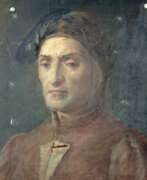

William Herbert Allen was an English landscape watercolour artist whose career spanned more than 50 years from the 1880s to the 1940s. He was invariably referred to as «W. H.» rather than by his given name. He produced several thousand watercolours, chalk and pencil sketches mainly of the landscapes, traditions and people of West Surrey and North-east Hampshire. In addition, he produced scenes of other parts of the British Isles and various parts of continental Europe. These works included commissions in Italy for the Victoria and Albert Museum, Dublin, Edinburgh and Preston museums. He was made a member of the Royal Watercolour Society in 1903 and the Royal Society of British Artists in 1904 and his work was exhibited at the Royal Academy in 1927.
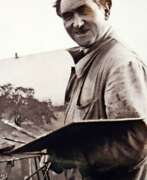

Otto Altenkirch was a German impressionist painter and stage designer. He studied at the Berlin University of the Arts and the Dresden Academy of Fine Arts.
Otto Altenkirch was one of the founders of the Künstlervereinigung Dresden, one of the artists who worked at the Dresden Museum and the Opera House.
For two decades one of his favourite subjects was the linden alley in Rheinsberg. In 1941 and 1943 his works were exhibited in the Große Deutsche Kunstausstellung (exhibition of Nazi-approved art in Munich).
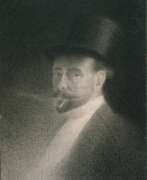

Charles Angrand was a French painter and draftsman known for his Pointillist style and depictions of rural life. Born in Normandy, Angrand moved to Paris in his youth to study art. He was initially influenced by the Realist and Impressionist movements, but later developed his own style of Pointillism, which he applied to landscapes, cityscapes, and genre scenes.
Angrand's Pointillist technique involved the use of small, distinct dots of color that, when viewed from a distance, blended together to create the impression of a more vibrant and luminous image. His work often focused on the people and landscapes of rural France, and he was particularly interested in the effects of light and atmosphere on his subjects.
Angrand exhibited his work at many important exhibitions, including the Salon des Indépendants and the Salon d'Automne in Paris. He was also involved in the Neo-Impressionist movement, which sought to explore the scientific principles of color and optics in painting.
Despite his contributions to the development of Pointillism, Angrand's work was largely forgotten after his death, and it was not until the mid-20th century that he began to be rediscovered by art historians and collectors. Today, his paintings are represented in many important collections, including the Musée d'Orsay in Paris and the Art Institute of Chicago.
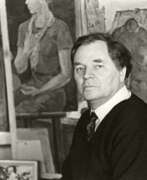

Fyodor Vasilievich Antonov (Russian: Фёдор Васильевич Антонов) was a Soviet and Russian artist of the twentieth century. He is known as a painter, graphic artist, textile artist, teacher, and professor.
Fyodor Antonov created landscapes, portraits and thematic compositions. In his genre works he immortalized the life and life of Soviet youth, as well as the formation of industry in the USSR. During the Great Patriotic War, the artist created portraits of heroes, as well as posters with a simple and direct pictorial form. Antonov's works are in various museum collections, including the Tretyakov Gallery, the Russian Museum and many private collections.
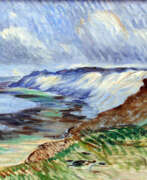

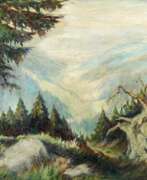

Friedrich August Baer was a German painter who initially pursued law but turned to painting after being inspired by Eduard Schleich's work. He was a self-taught artist who received guidance from Adolf Lier and Hermann Baisch. Baer was a member of the Munich Art Association and exhibited his works in various exhibitions across Germany and Austria. He became interested in painting high mountain landscapes and was occasionally misunderstood for his unique style. Baer was also a writer and book illustrator and received several medals and awards for his artistic achievements.
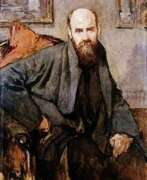

Albert Baertsoen was a Belgian painter, pastellist and graphic artist. His debut as a painter came in 1887, when he participated in an exhibition in Brussels held by the secessionist group l'Essor. He continued his studies in Paris, at the art school of Alfred Philippe Roll, and exhibited at the Salon in 1889. In 1894, he helped found the "Cercle des Beaux-Arts d'Ostende". From 1896 to 1901, he continued to exhibit throughout Europe, winning several Gold Medals. In 1913, he served as a member of the art jury for the Ghent World's Fair. During World War I, he lived in London, returning to Ghent in 1919. That same year, he was appointed a member of the Royal Academy of Belgium.
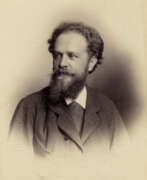

Hermann Baisch was a German painter of the second half of the 19th century. He is known as a landscape painter.
Baisch found inspiration for his landscapes in the neighborhoods around Munich. He often depicted livestock in his paintings, which created a cozy and warm atmosphere. The artist preferred to work en plein air, and his works showed the influence of French Impressionism. His most successful works, in particular, are considered to be "Cows in the pasture", "Morning", "Near Dortrecht at low tide", "On the Dutch Canal".
Baisch was a member of the academies of fine arts in Berlin, Munich and Vienna, as well as a professor at the Art School in Karlsruhe.


Leonardo Bazzaro was an Italian painter who worked mainly on landscapes and vedutas. He studied painting at the Brera Academy in Milan.
Leonardo Bazzaro is considered one of the leading representatives of Lombard naturalism.


Adalbert Franz Eugene Begas is a German painter and portrait painter. In 1862, Adalbert followed his brother, the sculptor Reinhold, to the Grand Ducal Saxon School of Art in Weimar, where he began working in the workshop of Arnold Böcklin.


Mikhail Andreevich Berkos (Russian: Михаил Андреевич Беркос) was a Ukrainian painter known for his vibrant landscapes and coastal scenes. Born in Kharkiv in 1861, Berkos became a significant figure in the Ukrainian art world, contributing to the development of landscape painting.
Berkos's work is celebrated for its delicate use of light and color, capturing the serene beauty of nature. His paintings often depict the Ukrainian countryside and Black Sea coast, characterized by their atmospheric and emotive qualities. These works highlight Berkos's ability to convey the tranquil and idyllic essence of the natural world.
Many of Mikhail Andreevich Berkos's paintings are housed in prestigious museums and galleries, including the Kharkiv Art Museum and the Odessa Art Museum. Collectors and art enthusiasts highly value his contributions to Ukrainian art, and his legacy continues to inspire contemporary artists.
Sign up for updates on new product sales and auction events related to Mikhail Andreevich Berkos. Stay informed about the latest opportunities to acquire his exceptional works.
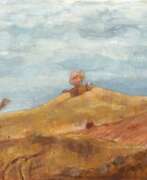

Siegfried Berndt, born 1880 in Germany and passing away in 1946, was a distinguished painter and printmaker whose artistic contributions are often overlooked in art history. After studying at the Dresden Art Academy, Berndt received a travel scholarship that profoundly influenced his art, taking him to cities like Paris, Brussels, Antwerp, London, and Scotland. These travels exposed him to diverse artistic movements, enriching his work with elements of Impressionism, Expressionism, and New Objectivity.
Berndt was especially skilled in the traditional Japanese woodblock printmaking technique, which he employed to explore various artistic styles. This unique approach resulted in color woodcuts with a distinct personality, appealing to a wide range of collectors. His woodblock prints are particularly noted for their innovative use of this traditional technique, blending it with Western artistic movements.
Despite the challenges posed by the two World Wars, Berndt's work found its way into public collections and was recognized for its artistic merit. However, much of his pictorial work was lost due to the turmoil of war. Some of his expressive pastel works, often repeated with small variations, as well as oil paintings, have been documented.
Berndt's art remains relevant for collectors, auctioneers, and experts in art and antiques, particularly for those interested in the intersection of Eastern and Western printmaking techniques. His work, although not as widely known, represents a unique blend of styles and techniques that contribute to the rich tapestry of early 20th-century art.
For enthusiasts interested in staying updated about sales and auction events related to Siegfried Berndt's work, subscribing to updates would be beneficial. This ensures access to the latest information about new sales and auction events related to his art.
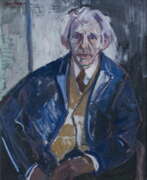

Tom Beyer is a German artist.
Beyer studied at the Düsseldorf School of Applied Arts, traveled throughout Europe, in 1931 opened a studio in Berlin and joined the Communist Party. Although the National Socialists who came to power in Germany in 1937 forbade him to exhibit, from 1939 to 1945 Beyer took part in World War II as a Wehrmacht soldier.
After the war, Beyer led an active social and artistic life. He was also a member of the Association of Visual Artists of the GDR and became its chairman in 1950. As a member of the SED, Beyer reflected in his works the socialist construction in his country, depicting nature and people. He created a large mural for the Löwenschen Saal hall in the Stralsund town hall. From 1972 he taught part-time at the Berlin-Weißensee School of Art.


François Joseph Binjé, known as Frans or Franz Binjé (dit Frans ou Franz Binjé) was a landscape painter who depicted rural views. He painted in oil, watercolour and pastel.
François Joseph Binjé was self-taught, later becoming a teacher. His realistic style was eventually influenced by Impressionism. He participated in regional exhibitions from 1874, as well as international exhibitions (Berlin 1869 and Paris 1900). Two of his works appeared in the catalogue of the Giroux Gallery in 1927. He is widely represented in the collections of the Walloon Art Museum in Liège.
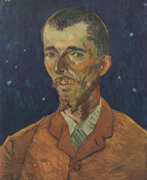

Eugène Boch was a Belgian painter, celebrated for his vibrant contributions to the Post-Impressionist movement. Boch was part of a prominent family known for their fine china business, Villeroy & Boch. He pursued his passion for art in Paris, studying under notable teachers such as Léon Bonnat and Fernand Cormon.
Eugène Boch's artistry is marked by his distinct style and use of color, which earned him spots in prestigious exhibitions like the Salon in Paris during the 1880s. His works, characterized by their emotional depth and innovative techniques, reflect the bold spirit of the Post-Impressionist era. He was not only a painter but also a visionary, whose works resonated with the aesthetic shifts of his time.
One of Eugène Boch's most notable associations was with Vincent van Gogh, who painted Boch in the famous portrait "The Poet," which Van Gogh described as a vision of idealistic and artistic purity. This painting is now housed at the Musée d'Orsay, symbolizing their profound connection and mutual respect. Boch's own works, like "The Red Roofs," demonstrate his unique ability to blend reality with his visionary outlook, showcasing scenes filled with vivid colors and dynamic compositions.
Eugène Boch's legacy extends beyond his paintings. Upon his death in 1941, he left a significant impact on the cultural heritage of Europe, influencing future generations of artists. His works continue to be celebrated in major museums and galleries, reminding us of his pivotal role in the development of modern art.
For collectors and experts in art and antiques, Boch's works offer a timeless exploration of Post-Impressionist vibrancy. Sign up for updates and stay informed about new sales and auction events featuring Eugène Boch’s timeless works, ensuring you never miss an opportunity to own a piece of art history.
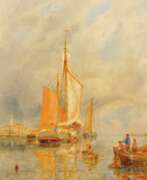

William Joseph Julius Caesar Bond was a British landscape painter.
Influenced by the Pre-Raphaelites in the 1850s, Bond began exhibiting at the Liverpool Academy and was elected associate in 1856 and full member in 1859.


Victor Elpidiforovich Borisov-Musatov (Russian: Ви́ктор Эльпидифо́рович Бори́сов-Муса́тов) was a distinguished Russian artist celebrated for his unique contribution to the Post-Impressionist movement, combining elements of Symbolism, realism, and a decorative style that was all his own. Born in 1870 in Saratov, Russia, into the family of a former serf, Borisov-Musatov overcame early challenges, including a spinal injury that left him humpbacked, to emerge as a pivotal figure in Russian art. His education spanned the Moscow School of Painting, Sculpture and Architecture, and the Imperial Academy of Arts in Saint-Petersburg, further enriched by studies in Paris under the tutelage of Fernand Cormon. His admiration for French contemporaries, especially Pierre Puvis de Chavannes and Berthe Morisot, profoundly influenced his artistic direction.
Borisov-Musatov is renowned for his lyrical, evocative works that often depict the serene and idyllic life of the 19th-century Russian nobility, set against the backdrop of their estates. This half-illusory world, which he masterfully created, reflects a deep nostalgia and a retreat from the industrial harshness of his time. By integrating figures seamlessly into the landscapes, as seen in masterpieces like "The Pool" (1902) and "The Phantoms" (1903), he achieved a harmony that resonates with viewers for its beauty and tranquility. His use of mixed media, including tempera, watercolor, and pastel, allowed for subtle visual effects, making his works distinctive in their soft, dreamlike quality.
Borisov-Musatov's legacy extends beyond his paintings; he was a significant figure in the Russian Symbolist movement and a founding member of the Moscow Association of Artists. His works, which provide a poignant, poetic commentary on the era he lived in, are celebrated in Russian and international art circles alike. Notable paintings like "The Pool" and "The Phantoms" not only highlight his technical skill but also his ability to evoke emotion and atmosphere, making them favorites among collectors and art enthusiasts.
For collectors and experts in art and antiques, Borisov-Musatov's oeuvre offers a fascinating glimpse into the Russian Symbolist movement and the broader cultural milieu of the late 19th and early 20th centuries. His works, preserved in museums and private collections around the world, continue to enchant and inspire.
For those interested in staying informed about new product sales and auction events related to Victor Elpidiforovich Borisov-Musatov, subscribing for updates is highly recommended. This subscription ensures that enthusiasts and collectors alike will not miss the opportunity to own a piece of this remarkable artist's legacy, encapsulating the elegance and serenity that define his work.
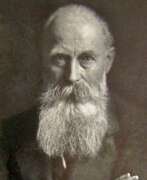

Eugen Felix Prosper Bracht was a German landscape painter.
A late Romanticist painter, Bracht was known for his moody landscapes and coastal scenes in North Germany, and began a sketching trip through Syria, Palestine and Egypt from 1880 to 1881. In 1882, he became a Professor of Landscape Painting at the Prussian Academy of Arts.
Later, Bracht became a representative of German Impressionism.
In 1901, he obtained a teaching position at the Dresden Academy of Fine Arts that he held until 1919.
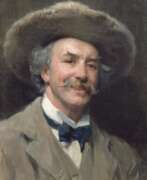

Frank Bramley was an English post-impressionist genre painter of the Newlyn School. Bramley studied at the Lincoln School of Art. He then studied at the Royal Academy of Fine Arts in Antwerp. He lived in Venice from 1882 to 1884 and then moved to Cornwall and established himself in the Newlyn School artist colony on Rue des Beaux Arts. Along with Walter Langley and Stanhope Forbes, he was considered to be one of the "leading figures" of the Newlyn School. In contrast to other members of the Newlyn school, Bramley specialised in interiors and worked on combining natural and artificial light in his paintings, such as A Hopeless Dawn. During his time in Newlyn, Bramley was a particular exponent of the ‘square brush technique’, using the flat of a square brush to lay the paint on the canvas in a jigsaw pattern of brush strokes, giving a particular vibrancy to the paint surface. In the early 1890s, his palette became brighter and his handling of the paint looser and more impastoed, while his subject matter narrowed to portraits and rural genre paintings. In 1894 Bramley became an Associate of the Royal Academy (ARA) and in 1911 he became a Royal Academician (RA). He was also a gold medal winner at the Paris Salon.
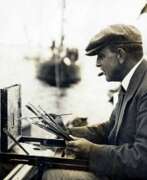

Carl August Breitenstein was a Dutch landscape painter and graphic artist. Breitenstein was a nephew of the German painter Alfred Breitenstein. Breitenstein studied from 1884 to 1889 at the Rijksakademie van beeldende Kunsten in Amsterdam. He engaged in plein air painting in the style of the Hague School, influenced by Impressionism. He mainly painted landscapes, but also city and harbor views, dune landscapes and floral still lifes. Breitenstein was a member of Kunstenaarsvereniging Sint Lucas and Arti et Amicitiae.
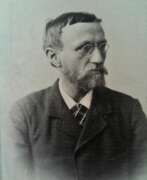

Hans Andersen Brendekilde, born Hans Andersen, was a Danish impressionist painter and representative of the Socialist Realist style.
Hans was a distant relative of the famous storyteller Hans Christian Andersen and also from a very poor family. However, his abilities were noticed, and he was admitted to the Royal Danish Academy of Fine Arts in Copenhagen, from which he graduated with honors, becoming a sculptor. However, Hans immediately began to paint, and depicted the harsh conditions of life in rural Denmark between 1880 and 1920. This was the beginning of the social realist style.
In 1884 he was living in Copenhagen with his friend, the painter Laurits Andersen Ring (1854-1933), at which time Hans took a second surname, Brendekilde, to avoid confusion.
Brendekilde was a committed socialist and produced many paintings depicting poor people working in the fields or in their homes at tragic moments in life. His most famous painting is The Weary One, which he completed in 1889. Through his work, Brendekilde had a great influence on many of his contemporaries, including Edvard Munch.
The talented and versatile artist also worked as an illustrator and gave a movement to arts and crafts in Denmark. Working for many years in the famous ceramics factory of Herman A. Koehler, he attracted other artists to this activity. And at the end of his life, the artist began to paint more positive pictures: flowers, playing children, fields under the sun.
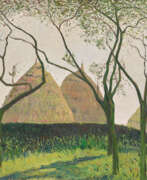

Julius Bretz was a German painter of the late nineteenth and first half of the twentieth centuries. He is known as a painter and graphic artist, a painter of landscapes and floral still lifes, a representative of the Düsseldorf and Hague Schools.
Julius Bretz was one of the four founders of the Düsseldorf art association Sonderbund and a founder of the Rhine Secession. He was also a member of the artist association "Malkasten" and a member of the Cologne and Bonn artist associations.
Bretz's paintings can be seen today in art museums in Bonn, Düsseldorf, Cologne, Wuppertal, Zurich and other cities
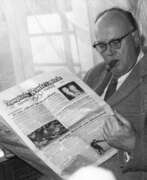

Franz Bronstert was a German engineer and painter. Before World War I Bronstert visited and finished the superior school for engineers in Hagen. He served during the war in the rank of Lieutenant and later „Rittmeister" equivalent to Captain. As a prisoner of war at Ripon, Yorkshire he got into contact with artists Fritz Fuhrken and Georg Philipp Wörlen and started with his own artistic work. These contacts led to the foundation of the group of artists „Der Fels" (The Rock). Past the war he settled in Hagen and made contact with the group around collector Karl Ernst Osthaus especially with Christian Rohlfs. The latter influenced the work of Bronstert considerably. Membership in „Der Fels" led to numerous exhibitions all over Germany and Austria between 1921 and 1927. Bronstert’s art developed from radical expressionism of the early twenties to a realistic phase and finally to a reformed impressionism as the artist claims himself. Bronstert finds his motifs mostly in nature. Even though Bronstert mastered several techniques, like oil painting, drawing, woodcut it was the watercolour painting that he loved most. Bronstert was both a technical and artistic talent. He was successful in his job and was a member of the board of VARTA with several international patents on his record when he retired. Past retirement he concentrated solely on his art again. Works by Bronstert can be found in the Schneider Collection, Museum Baden, Solingen; in the collections of Karl Ernst Osthaus-Museum in Hagen; in the Museum Schloss Moyland, in the Von der Heydt-Museum, Wuppertal, in the Bavarian State Painting Collections, Munich,and in the art museums of Soest, Germany, Iserlohn, and Lüdenscheid as well as in private collections.


Fyodor Fyodorovich Buchholz (Russian: Фёдор Фёдорович Бухгольц) was a Russian artist of German origin in the late 19th century and the first half of the 20th century. He is known as a painter, graphic artist and teacher.
Fyodor Buchholz painted mainly on historical themes and genre paintings, as well as portraits and landscapes. At the end of the XIX century, the artist was fascinated by Art Nouveau. After the revolution of 1917 he began to create works on the themes of social construction.
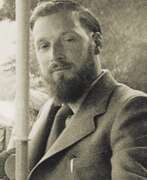

Lionel Victor Bulmer was an English impressionist painter, a member of the New English Art Club, founded in 1886 as an exhibition society dedicated to promoting the avant-garde technique of French impressionist painting, the influence of which was clearly evident in Bulmer's own work.
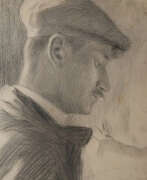

Georg Burmester was a German artist of the late 19th - first third of the 20th centuries. He is known as a painter, graphic artist, impressionist, representative of the Düsseldorf art school, and teacher.
Burmester worked mainly in the genres of landscape and marinas, but among his works there are also still lifes, as well as works in the genre of nude. He was a teacher at the Kassel Art School from 1912 to 1930 and was promoted to the rank of professor in 1917.


Theodore Butler was an American Impressionist painter who is best known for his depictions of the French countryside.
Butler studied at the Art Students League of New York and worked as an illustrator for publications such as Harper's Weekly and Scribner's Magazine. In 1887, he traveled to France to study at the Académie Julian in Paris. There, he met the Impressionist painter Claude Monet and became part of his inner circle of friends and collaborators. Butler eventually settled in the village of Giverny, where he lived for the rest of his life.
In Giverny, Butler painted landscapes and scenes of everyday life in the countryside, often featuring the gardens and water lilies made famous by Monet's own paintings. He developed a loose, painterly style that was influenced by the Impressionists but also showed the influence of Post-Impressionism.
Today, Butler's work can be found in the collections of museums such as the Metropolitan Museum of Art in New York City, the Musée d'Orsay in Paris, and the Art Institute of Chicago. His contributions to the development of Impressionism and his association with Monet continue to make him an important figure in the history of art.
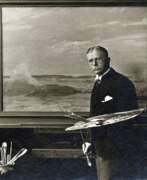

Howard Russell Butler was an American artist renowned for his multifaceted contributions to art and culture, particularly in painting and architecture. Howard Russell Butler's journey in art began after an illustrious education in science at Princeton University, leading him to merge his scientific acumen with artistic prowess. His specializations in landscape and portrait painting gained significant acclaim, but it was his unique ability to capture solar eclipses and celestial phenomena that distinguished his work, earning him a place in the annals of art history.
Howard Russell Butler's legacy includes the accurate portrayal of the 1918 solar eclipse, an event that marked a significant milestone in his career. He was invited by the U.S. Naval Observatory to document this celestial event, utilizing his skills to capture nuances that photography of the time could not. His works on solar eclipses are celebrated for their precision and beauty, providing invaluable insights into a fleeting natural phenomenon.
Aside from his celestial paintings, Howard Russell Butler's contributions to American landscapes are noteworthy. His paintings of Zion National Park and the Grand Canyon, commissioned by the Union Pacific Railroad, played a pivotal role in promoting tourism to these iconic locations. These works, now housed in national parks and museums, reflect Butler's deep appreciation for America's natural beauty and his skill in conveying it through his art.
Howard Russell Butler's works are preserved in prestigious institutions like the Metropolitan Museum of Art, the Smithsonian American Art Museum, and the American Museum of Natural History, where audiences can witness the breadth of his talent and the depth of his contributions to art and science. His ability to blend scientific precision with artistic expression left an indelible mark on the art world, making his works cherished pieces of American cultural heritage.
For collectors and art and antiques experts, Howard Russell Butler's oeuvre offers a unique intersection of art, science, and history, presenting opportunities to explore the rich narratives behind his creations. Whether it's the dynamic portrayal of natural landscapes or the meticulous depiction of celestial events, Butler's art continues to inspire and captivate audiences.
If you're keen on staying updated with sales and auction events related to Howard Russell Butler's works, consider signing up for updates. This subscription will ensure you're informed about new opportunities to engage with the art and legacy of this remarkable artist, without any undue pomp or extravagance.
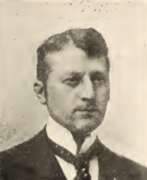

Georges-Léon-Ernest Buysse is a Belgian impressionist and luminist painter. Busset took lessons from the Ghent painter Louis Titgadt. The artist Emil Klaus, who was one of his friends, also gave him a lot of advice. He has participated in exhibitions since 1894. At the 1894 Salon of the National Society of Fine Arts in Paris, he exhibited two canvases on the theme of "snow effects". At that time, his work was focused on landscapes, views of the city of Ghent and gardens of country residences in the vicinity of Ghent. In 1904, Busset was one of the co-founders of the artistic circle Vie et Lumière. His early work was realistic or pre-impressionist. Later, his palette became - under the influence of Emile Claus and after their trip to the south of France - clearer, the work acquired impressionist and luminist features. He adhered to Luminism, in particular as a co-founder of the art circle Vie et Lumière, and used light and lighting effects in his painting.
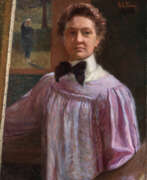

Lilla Cabot Perry, birth name Lydia Cabot Perry, is an American impressionist painter.
Lydia Cabot Perry began painting after her marriage and the birth of her children. Some time spent in Japan and France, where she painted a lot. After meeting Claude Monet, which took place in 1894, the artist sharply changes his style and technique of image. Among other genres, she favoured landscape painting.


Jacques (Ya'akov) Chapiro was a painter of the School of Paris.
Chapiro's works can be found in museums in the United States (Chicago), Russia (Moscow) and France (Jeu de Paume, Paris). As to his artistic style, it seems that Chapiro was fond of experiments. His many paintings are much different from one another; some are classified as Cubistic in style, some as Impressionist and others as Fauvist. Throughout his artistic career, Chapiro kept sketching in his unique signature, with a light and talented hand. It is in his realistic sketching, which are somewhat casual, that one can be truly impressed by his talent.
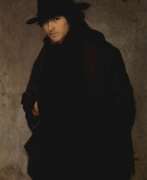

Philipp Antonovich Chirko (Russian: Филипп Антонович Чирко) was a Russian and Ukrainian painter, born on July 3, 1859, in Kyiv. Chirko was known for his realistic style and was associated with the Peredvizhniki movement, a group of artists committed to social realism and traveling exhibitions. He studied at the Kyiv Drawing School and later at the Imperial Academy of Arts in Saint Petersburg, graduating in 1892.
Chirko’s works often depicted battle scenes, genre paintings, and landscapes of Ukraine. Notable paintings include "The Pursuit of French Mounted Chasseurs by the Horse Guards under Polotsk on August 6, 1812," which is part of the Borodino Panorama Museum's collection in Moscow. Unfortunately, many of his works were lost during World War II.
Chirko’s remaining works are highly valued by collectors and can be found in various Russian museums, including the Chernihiv Art Museum. His contribution to art is significant for its historical and artistic value, capturing the essence of his era.
Sign up for updates related to Philipp Antonovich Chirko to receive notifications about new product sales and auction events.
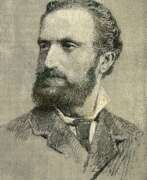

Guglielmo Ciardi was an Italian marine and landscape painter.
Ciardi graduated from the Venice Academy of Fine Arts, traveled extensively throughout the country and made sketches. These include views of the Venetian lagoon with fishing boats and the countryside around Treviso, mountain landscapes painted during his many trips to the cities of Veneto, Trentino and Lombardy.
Guglielmo Ciardi was an active participant in many exhibitions and was awarded a gold medal at the San Francisco Exposition in 1915.
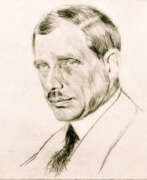

Max Clarenbach was a German painter of the first half of the twentieth century. He is known as a painter, landscape painter, genre painter and teacher and is considered one of the most important representatives of Rhenish painting of his time.
Max Clarenbach made study trips to Italy and Holland early in his career, where he formed his genre preferences and became a landscape painter. His work reflected the influence of the Hague School and the French Barbizonians. The artist skillfully depicted winter scenes and the nature of western Germany. He also painted sports and street scenes.
Clarenbach was one of the organizers of the Düsseldorf Sonderbund and taught at the Düsseldorf Academy of Art.
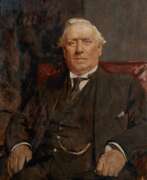

André Edmond Alfred Cluysenaar was a Belgian painter. He was especially known for portraits and female figures. He was member of the Cluysenaar family, descendant from a long line of architects who originated in Aachen. He received his first art lessons from his father, then studied with François-Joseph Navez. Initially, he worked as a sculptor, but devoted himself entirely to painting after 1902. He was firmly grounded in the romantic style at first; producing still lifes and genre scenes, but later turned to impressionism and painted mostly female figures, often semi-nude. He also executed monumental ceiling paintings for the City Hall in Saint-Gilles. During World War I, he lived in London where he established a reputation painting portraits of notable people, including the Royal Family, which were done in a more commercial style using Alfred Stevens as a model. Most of these portraits may be seen in the National Gallery.


Edward Harrison Compton was a German landscape painter and illustrator of English descent.
Like his father he was inspired by the Alps to become a mountain painter (Bergmaler) working in both oils and watercolour. However, an attack of Polio at the age of 28 meant that he had to find more accessible landscapes to paint in Germany, England, northern Italy and Sicily. He also provided illustrations for several travel books published by A & C Black.


Edward Theodore Compton was an English-born, German artist, illustrator and mountain climber. He is well known for his paintings and drawings of alpine scenery, and as a mountaineer made 300 major ascents including no fewer than 27 first ascents.


Charles Edward Conder, an Anglo-British painter, was a pivotal figure in the Australian art scene, known for his significant contributions to the Heidelberg School and the famous 9 x 5 Impressions Exhibition. Born in England in 1868, Conder's artistic journey began in earnest when he moved to Australia, where he immersed himself in the country's landscapes and developed a unique style that melded his natural instinct for color and design with the influences of his contemporaries and the environment.
Charles Edward Conder's time in Australia was marked by collaborative efforts with other notable artists, including Tom Roberts and Arthur Streeton, with whom he shared a studio and participated in the notable 9 x 5 Impressions Exhibition. His work during this period, characterized by a distinctive use of color and form, captured the essence of the Australian landscape while reflecting his personal artistic sensibilities.
In 1890, Charles Edward Conder's artistic pursuits took him to Europe, where he studied in Paris and mingled with prominent artists and writers of the day. His work continued to evolve, embracing the influences of Aestheticism and the Bohemian lifestyle he led. Despite his artistic success, Conder's life was marred by health issues, including the effects of syphilis, which he contracted early in his career. His later years were spent in a struggle with the disease, culminating in his death in a sanatorium in 1909.
Today, Conder's legacy is preserved in his contributions to Australian art and the influence he had on his peers and successors. His works continue to be celebrated for their beauty, emotional depth, and the unique perspective they provide on the landscapes and culture of Australia during his time.
For those interested in delving deeper into the life and works of Charles Edward Conder, his art remains a testament to his skill and vision, offering a window into the vibrant art scene of his era and the landscapes that inspired him.
If you're captivated by the unique blend of Australian landscapes and European artistry in Charles Edward Conder's work, or if you wish to discover more about the Heidelberg School's influence on art and culture, we invite you to sign up for updates. Stay informed about upcoming exhibitions, sales of Conder's works, and exclusive insights into the world of art collecting. Don't miss the opportunity to deepen your appreciation for one of the luminaries of Australian art.
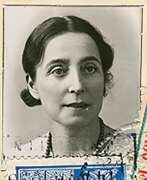

Margherita known as Mara Corradini was an Italian painter and illustrator. Daughter of an industrialist, she studied in Naples, Munich, at the Académie Julian in Paris, in Berlin as a pupil of Martin Brandenburg and then of Henry Luyten at the Institute of Fine Arts in Brasschaat. She obtained the Great Bronze Medal at the 34th International Exhibition of Fine Arts in Naples, as well as in 1912, a 1st class honorary diploma and a gold medal at the Academy of Weimar. In 1924, she won a new honorary diploma at the International Exhibition of Women's Portraits and in 1927 at the International Exhibition in Bordeaux. His paintings Dutch Landscapes and Low Tide were purchased by King Victor-Emmanuel III.
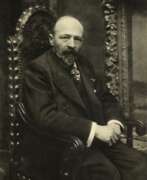

Franciscus Eduardus Maria (Franz) Courtens (1854–1943) was a Belgian painter. He was a leading figure in the Dendermonde School, famous for his paintings of nature and landscapes. Courtens was professor at the Royal Academy of Fine Arts (NHISKA) in Antwerp from 1904 till 1924. He was a personal friend of Leopold II, who gave him the privilege of free access to the royal Parc of Laeken. Some of his paintings stil remain in the Royal collection.


David Cox was a British landscape painter, celebrated for his pivotal role in the Birmingham School of landscape artists and as a precursor to Impressionism. Born in Birmingham in 1783, Cox initially worked in his hometown as a scene painter before pursuing a career in watercolors and, later, oils in London. His paintings are renowned for their dynamic depiction of the English and Welsh countryside, capturing the sublime effects of weather and light with a loose, expressive brushwork that distinguished him from his contemporaries.
Throughout his career, Cox experimented with various materials, notably adopting what came to be known as "Cox Paper," a rough paper that enhanced the textural effects of his watercolors. His works are held in high esteem and are part of collections in major museums, including The Metropolitan Museum of Art and the Tate Gallery, where his notable works such as "Journey Home" and "Rhyl Sands" are displayed.
In the latter years of his life, Cox returned to Birmingham, where he continued to innovate in both watercolors and oils until his death in 1859. His contributions to the landscape genre have left a lasting impact on the field of British art.
For collectors and art experts interested in David Cox's work, staying updated on sales and auction events can provide opportunities to acquire pieces by this influential artist. Sign up here to receive updates exclusively related to David Cox's artwork.
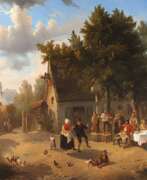

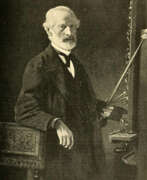

Hugo Crola was a German painter, son of the landscape artists Elise and Georg Heinrich Crola.
Hugo Crola studied at the Düsseldorf Academy of Art and later became a professor. He created images of many aristocratic and wealthy public figures, but is best known for his portraits of fellow artists.
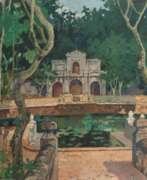

Henri Célestin Louis Dabadie was a French landscape and Orientalist painter.
He was a student of Jules-Élie Delaunay and Henri Michel-Lévy. After completing his studies, he devoted himself to Impressionistic landscape painting; primarily in Brittany. He alo painted harbor scenes in Rotterdam and Hamburg.


Peter Jürgen Dahm was an outstanding German painter of the Impressionist style whose work spanned the first half of the 20th century. His paintings depicting European cityscapes are characterised by a remarkable aesthetic. With impressive precision and masterful technique, Dahm captured on canvas the painterly beauty of both northern Italy and the Netherlands.
Dahm's distinctive signature is reflected in the art he created, and his works continue to enjoy great recognition and admiration today. His attention to detail and ability to capture the essence of the landscape have made his paintings timeless masterpieces. As an artist, Peter Jürgen Dahm was inspired by nature and his passion for painting is evident in every brushstroke. His artworks take the viewer on a captivating journey through picturesque settings that touch the soul and capture the beauty of our world in its purest form.
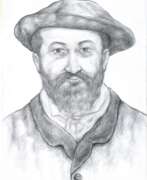

Pierre Emmanuel Eugène Damoye was French artist who was regularly recognized by a broad range of art critics as one of the most significant heirs to the Barbizon school tradition. He studied his craft at the École des Beaux-Arts and went on to become a renowned and influential landscape artist noted for his sweeping skies, tree studded-plains, and vibrant farmlands.
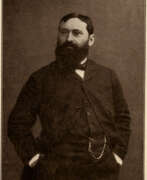

Giuseppe de Nittis was an Italian painter associated with the Macchiaioli movement, which emerged at the end of the 19th century as a reaction to the traditional academic style of painting.
Giuseppe de Nittis first studied at the Neapolitan Academy of Fine Arts before moving to Paris in 1868, where he was influenced by the Impressionist movement and the work of Édouard Manet and Edgar Degas. He quickly gained recognition for his ability to skilfully convey light and atmosphere in his paintings.
De Nittes' style can be described as a mixture of realism and impressionism. He often depicted city scenes, landscapes and portraits. His work is characterised by a loose brushwork, vivid colours and a strong sense of observation.
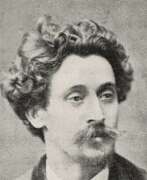

Louis Victor Antonio Artan de Saint-Martin was a Belgian marine painter. His work was influenced by the Barbizon School and the French marine painter Eugène Boudin. A convinced realist, he confined himself to the familiar North Sea, which he studied every day. He was fascinated by dramatic effects and exceptional atmospheric conditions. Just as in the paintings of the Tervuren school, his painting, created by the use of large quantities of pigment applied in copious layers or large masses skilfully distributed and then worked with a trowel, gives the work an appearance of breadth and immediacy.
Saint-Martin was one of the sixteen co-founders of the Société Libre des Beaux-Arts, an association opposed to the stylistic hegemony of the academies and salons. After 1880 he worked in a more impressionist style, and in 1881 he became a Chevalier de l'Ordre de Léopold. Two years later, the artist was awarded a gold medal at the International Colonial and Export Exhibition in Amsterdam.
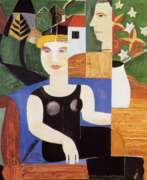

Gustave Franciscus De Smet was a Belgian painter. Together with Constant Permeke and Frits Van den Berghe, he was one of the founders of Flemish Expressionism. In 1908, he and his wife followed Léon to the artists' colony in Sint-Martens-Latem. There, they initially came under the influence of Luminism and the painter Emile Claus, who lived in nearby Astene. At the beginning of World War I, he and his family joined his friend, Van den Berghe, and fled to the Netherlands. From 1914 to 1922, they moved about, visiting and staying at the art colonies in Amsterdam, Laren and Blaricum.[2] His meeting with the Expressionist painter Henri Le Fauconnier marked a turning point in his style which, up until then, owed much to Cubism. In 1927, he settled in Deurle. It was there that his mixture of Expressionism and Cubism peaked, with a series of works depicting circus, fairground and village scenes. After his death in Deurle at the age of sixty-six, his house was preserved as a local museum.
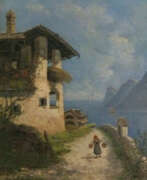

Gabriele Maria Deininger-Arnhard was a German-Austrian painter.
Deininger-Arnhard painted mostly landscapes from the Tyrolean and Bavarian regions, but also depicted rural interiors, in oil and watercolor. She was best known for her depictions of the Ötztal. According to her own account, she painted more than 1,000 large-format oil paintings. These may be found in collections in various cities in Germany, Tyrol, Vienna, Paris, Holland, Switzerland, the Czech Republic, Hungary and North America.


Hippolyte Camille Delpy was a French painter.
He came from a moderately wealthy family from Joigny, in the Burgundy region of France. His son, Henry Jacques Delpy (1877-1957), also became a painter, as did a cousin on his father's side, Lucien-Victor Delpy (1898-1967).
Delpy studied with Charles-François Daubigny as well as Corot. A contemporary of the Impressionists, Delpy blended the subject matter that he adopted from Daubigny with the brighter colors and looser paint handling that were trademarks of his own generation to create distinctive new visions of many of the landscapes first explored by the Barbizon artists.
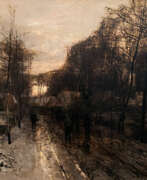

Gustave Den Duyts was a Belgian painter, watercolourist, pastelist, etcher and graphic artist, known for his landscapes. His graphic work quickly gained attention. His etchings won him a prize in 1875 in the competition run by the journal "Journal des Beaux-Arts". On the other hand, at the Fifth Exhibition of the Vereniging der Gentsche Kunstoefenaren his painting received criticism because of being too modern. Its indefinite forms forced the viewer to squint in order to make it out and this vagueness of definition is now regarded as a forerunner of Flemish impressionism. Much of his work was townscapes or landscapes with a melancholic feeling, often with a setting sun or a rising moon and typically done in autumn or winter. The landscapes are usually bare, skeletal and stylized, betraying the fact that he was a skilled etcher, but never detailed. Human or animal figures are not sharply defined but appear to dissolve into the background.
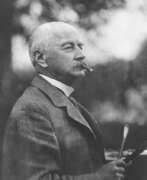

Adolf des Coudres was a German landscape painter. His father was Ludwig des Coudres, a painter and Professor at the Academy of Fine Arts, Karlsruhe. Despite this, he did not support his son's desire to become a painter. It was only after his father's death in 1878 that he was able to begin his studies. In 1881, he enrolled at the Academy, where he studied with Gustav Schönleber, who had a profound influence on his style. He remained there until 1890, making several stays at artists' colonies. After completing his studies, he worked as a freelance painter until 1909, participating in exhibitions at Baden-Baden and Munich, including several showings at the Glaspalast, as well as Karlsruhe. He also helped establish a private painting school for women. He often visited Holland; staying at the artists' colony in Ahrenshoop. In 1910, he moved to Fürstenfeldbruck, where he built a villa and studio for myself and his sister Luise. He participated in creating the first art exhibition there in 1914.
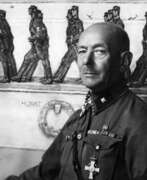

Ludwig Julius Christian Dettmann was a German artist of the late 19th century and the first half of the 20th century. He is known as one of the leading representatives of the Secession in Germany.
Dettmann began his career as an illustrator and in 1895 became a professor at the Berlin Academy of Arts. He then switched to landscape painting, worked in oil and watercolor techniques and became one of the first Impressionists in Germany. In 1898 the artist joined the Association of German Free Artists and co-founded the Berlin Secession. In 1900 Dettmann became director of the Königsberg Academy of Arts and promoted the development of the Nida colony of landscape artists on the Curonian Spit.
